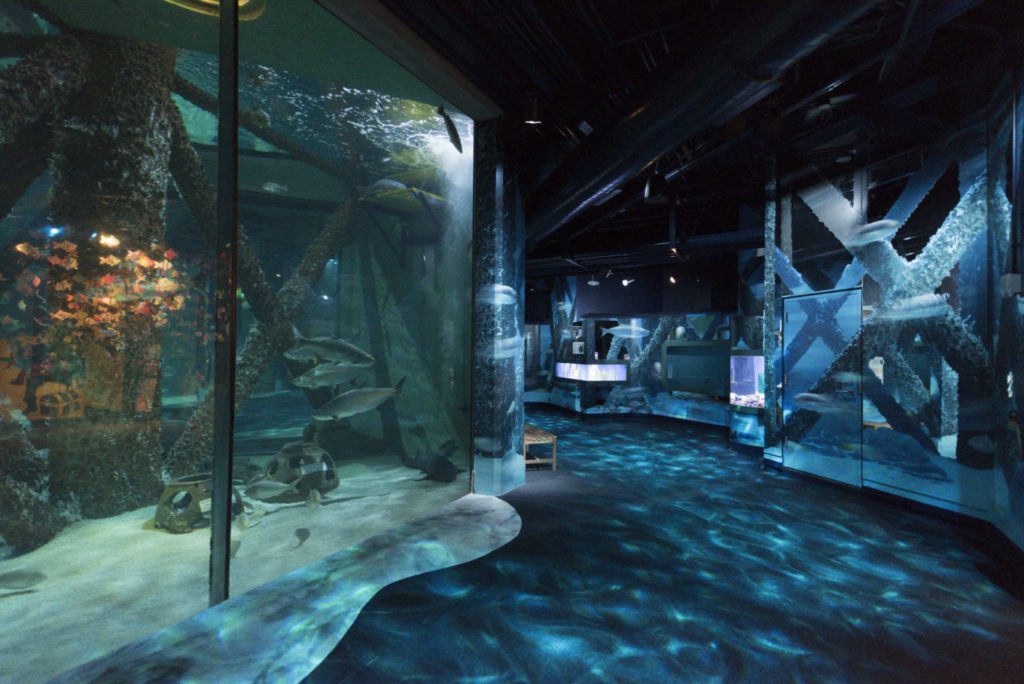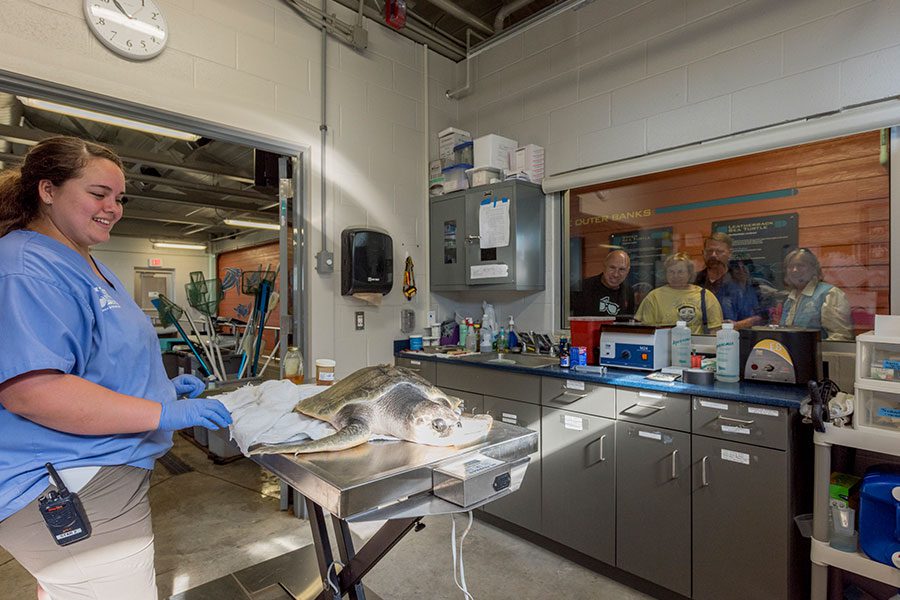Seven Trends in Aquarium Design

A competition-winning design for the New England Aquarium set the 20th century up for a new typology in visitor attractions – immersive experiences that combine education, conservation, and fun. This project type is still evolving today. Tourist destinations are becoming more than entertainment venues and aquariums are expected to provide more than tanks full of water.
In the decades since the New England Aquarium set the bar for a new generation of aquarium design, CambridgeSeven has continued to lead the profession in aquarium architecture and exhibit design. Trends that we see continuing to advance aquarium architecture:
1) Humane Practices
In keeping with standards set by the Association of Zoos and Aquariums (AZA), dolphin shows have all but been eliminated and aquariums have shifted their approach. As we learn more and gain a greater respect for the extraordinary intelligence of dolphins and other large aquatic mammals, their facilities are designed with sensitivity to their quality of life.
2) Sustainable Design
Modern aquarium design has led to innovative approaches to water use reduction and energy consumption by utilizing sustainable system designs that leverage technology through heat recovery systems, direct current variable speed pumps, and barrel-filter filtration systems to reduce the energy needs and operating costs and increase efficiency and performance of aquaria life support systems.
3) Fewer Fish
Just as high school and college science classes have switched to virtual dissections, aquarium design now incorporates virtual exhibits that equal or surpass the experience of seeing live, captive animals. The panoramic shark video above the new touch tank at the Audubon Aquarium of the Americas in New Orleans, for example, engages and educates visitors without requiring a shark to exist in small quarters.
4) STEM Education Links
Aquarium design now typically includes a series of interactive classrooms where students can explore STEM themes through aquarium exhibits. Fishery management, ocean preservation, and habitat stewardship are now used as Environmental Science case studies linking into curriculum-driven engagement with habitat biology and ecology, the chemistry and physics of the ocean, and the increasing risks to coral reefs.
5) Rescue and Rehabilitation
Saving stranded animals is now a major activity for aquariums and has seen the development of stranding rescue and rehabilitation facilities as part of the aquarium mission. The buildings provide off-site space where stranded animals, often turtles and seals, can be rescued, rehabilitated and then released back into the wild. CambridgeSeven has designed rehabilitation laboratories and facilities for the New England Aquarium and Virginia Aquarium.

6) Community-based Aquariums
With the advent of technology, exhibit design that can incorporate virtual technologies and sustainable practices, smaller, community-based aquariums can offer significantly more engaging exhibits than a generation ago. The Roundhouse Aquarium in Manhattan Beach, CA, is free to the public and has over 125,000 annual visitors. While just 2,000 sf, the aquarium manages to provide an immersive experience that educates visitors about the California coast.
7) Integration of Apps
Several cultural institutions have created their own apps for smartphones to be used by visitors as their own virtual tour guides and provide even deeper insights into the exhibits. Apps are also being used back of the house by the aquarists to track and manage the status of their tanks. This creates opportunities and challenges for aquarium designers to ensure that buildings are Wi-Fi-friendly and design places of rest in their spatial programming.